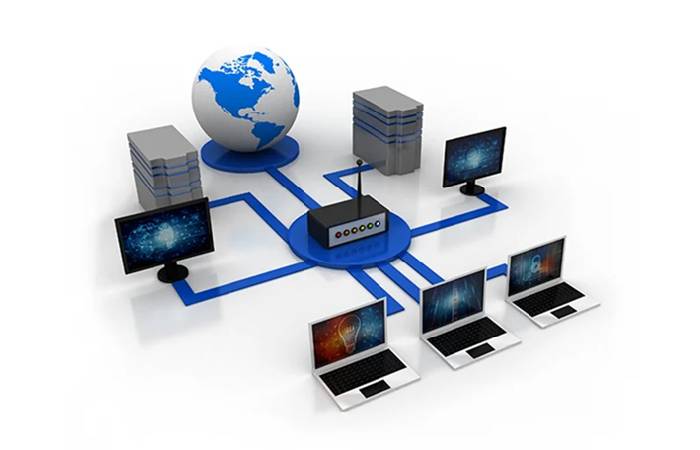Are you curious about how network connectivity is transforming the Internet of Things (IoT)?
In this article, we explore the role of network connectivity in building the IoT and the challenges it presents.
Discover the advancements that are enhancing integration between IoT devices and the seamless communication it enables.
Join us as we delve into the future of IoT and how network connectivity is shaping this exciting technology.
Table of Contents
The Importance of Network Connectivity in IoT
If you want to successfully build the Internet of Things, network connectivity is crucial. In today’s world, where devices are increasingly interconnected, having a reliable and robust network is essential for seamless communication and data transfer. And this is the same reason why multi-cloud connectivity is important. Network connectivity forms the backbone of the IoT ecosystem, allowing devices to connect, share information, and work together efficiently.
One of the main reasons why network connectivity is vital in IoT is because it enables real-time data exchange. With a stable network connection, IoT devices can transmit and receive data instantaneously, allowing for timely decision-making and actions. This is especially important in applications such as smart homes, healthcare monitoring, and industrial automation, where real-time data is critical.

Additionally, network connectivity ensures that IoT devices can be remotely managed and controlled. Through a network connection, you can access and monitor your IoT devices from anywhere, making it easier to configure settings, update firmware, and troubleshoot issues. This remote management capability saves time and resources, as it eliminates the need for physical interaction with each device.
Moreover, network connectivity facilitates scalability in IoT deployments. As the number of connected devices increases, a reliable network infrastructure can support the growing demand for data transmission and processing. This scalability is crucial for businesses and industries looking to expand their IoT capabilities without compromising performance or efficiency.
Challenges in Establishing a Robust Network Infrastructure for IoT
To establish a robust network infrastructure for IoT, you need to overcome several challenges. Here are the top four challenges you may encounter:
- Scalability: As the number of connected devices increases, the network needs to handle the growing volume of data traffic efficiently. Scaling the network infrastructure to accommodate this increased demand can be a significant challenge.
- Reliability: IoT applications often require real-time data transmission and low latency. Establishing a network that can reliably deliver data without interruptions or delays is crucial for the success of IoT deployments.
- Security: With the growing number of connected devices, the risk of cyber threats and unauthorized access to sensitive data also increases. Ensuring a secure network infrastructure that can protect IoT devices and data from potential breaches is a critical challenge.
- Interoperability: IoT devices and platforms come from various vendors and operate on different protocols. Ensuring seamless communication and interoperability between these devices and platforms pose a significant challenge in establishing a robust network infrastructure for IoT.
Ensuring Seamless Communication in the Internet of Things
To ensure seamless communication in the Internet of Things, you must establish robust connectivity between devices and platforms. This is crucial because in an IoT environment, multiple devices need to exchange data and information in real-time.
The key to achieving this seamless communication lies in choosing the right network protocols and technologies that can support the diverse range of devices and applications. One such technology is MQTT (Message Queuing Telemetry Transport), which is lightweight and ideal for IoT devices with limited processing power and memory.
Another important aspect is ensuring the scalability of the network infrastructure to accommodate a large number of devices and handle the increasing data traffic. This can be achieved by implementing cloud-based solutions that can handle the storage and processing of data efficiently.
Additionally, it’s essential to have a robust security framework in place to protect the communication between devices and platforms, as any vulnerability can potentially lead to unauthorized access and data breaches.
Advancements in Network Connectivity for IoT Devices
You can explore the advancements in network connectivity for IoT devices by considering both the increasing speed and the expanding range of wireless networks. Here are four key aspects to consider:
- 5G Networks: The introduction of 5G networks has revolutionized IoT connectivity by providing faster speeds, lower latency, and increased capacity. This enables real-time data transmission and supports a larger number of connected devices.
- Mesh Networks: Mesh networks offer a decentralized approach to IoT connectivity, where devices act as both data consumers and repeaters. This allows for extended coverage and improved reliability, as devices can communicate with each other, bypassing the need for a central hub.
- LPWAN Technologies: Low Power Wide Area Network (LPWAN) technologies, such as LoRaWAN and NB-IoT, are designed to provide long-range connectivity with low power consumption. These networks are ideal for IoT devices that require low bandwidth and have limited power resources.
- Edge Computing: Edge computing brings processing power closer to IoT devices, reducing latency and dependence on cloud connectivity. This enables real-time analytics and decision-making at the edge, improving responsiveness and reducing the need for constant network connection.
These advancements in network connectivity for IoT devices are crucial in building a robust and reliable Internet of Things ecosystem.
Enhancing Integration Between Iot Devices Through Network Connectivity
By improving network connectivity, you can enhance the integration between IoT devices and create a seamless ecosystem of interconnected smart devices. A strong network connection is crucial for the smooth functioning of IoT devices. With a reliable and fast network, IoT devices can communicate with each other more efficiently and effectively.

This integration allows for seamless data sharing and real-time communication between devices, enabling them to work together seamlessly. For example, a smart home system can integrate various IoT devices such as thermostats, lights, and security cameras to work together and create a comfortable and secure living environment.
Additionally, by enhancing integration through network connectivity, IoT devices can also benefit from improved data processing capabilities and advanced analytics, leading to more intelligent and personalized experiences for users.
The Future of Iot: How Network Connectivity Is Shaping the Internet of Things
In the future, network connectivity will play a crucial role in shaping the Internet of Things, allowing for even greater integration and communication between smart devices. As technology advances, here are four ways network connectivity is set to transform the IoT landscape:
- Faster and more reliable connections: With the emergence of 5G networks, IoT devices will benefit from lightning-fast speeds and low latency, enabling real-time interactions and seamless data transfer.
- Expanded coverage: Network connectivity will extend to even the most remote areas, enabling IoT devices to function in previously inaccessible locations. This will open up new possibilities for industries like agriculture, transportation, and healthcare.
- Improved security: As IoT devices become increasingly interconnected, network connectivity will play a vital role in ensuring robust security measures are in place. Advanced encryption protocols and authentication methods will safeguard data and protect against cyber threats.
- Advanced data analytics: Network connectivity will enable IoT devices to transmit vast amounts of data to cloud platforms, where powerful analytics tools can extract valuable insights. This will drive smarter decision-making, predictive maintenance, and automation across various industries.
With network connectivity at the forefront, the future of IoT holds immense potential for a more interconnected and efficient world.
Conclusion
In conclusion, network connectivity plays a crucial role in the success of the Internet of Things (IoT). It’s essential for establishing a robust infrastructure, ensuring seamless communication, and enhancing integration between IoT devices.
Advancements in network connectivity are shaping the future of IoT, enabling a connected world where devices can communicate and collaborate efficiently.
As technology continues to evolve, it’s clear that network connectivity will remain a vital component in building and expanding the Internet of Things.

